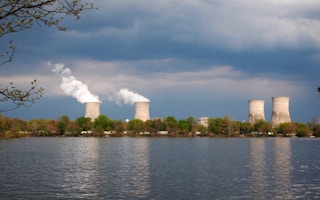While opposition to the deployment of nuclear in the developing world is a hot topic, this energy source is consistently topping the list as the short term solution to the climate crisis because it is the only one that addresses a critical dilemma. What is this dilemma, and why is a potential large scale deployment of nuclear reactors a concern?
What is the dilemma?
Rising levels of greenhouse gas (GHG) emissions are becoming alarming. Levels of GHG have already passed threshold safety levels and we are now at the start of a red zone of socio-environmental consequences, such as natural disasters and resource shortages. These will only intensify as GHG atmospheric levels keep rising. In order to keep the rising threats of climate change under control, GHG levels in the atmosphere should be stabilized.
Secondly, the reality is that global energy demand is rising very fast, especially in the developing world. Many countries are still opting for cheaper fossil fuels to meet this growing demand. Because of economic pressures, high levels of energy production are required to keep up with countries’ development targets.
The fact is, we have to cut the world’s CO2 emissions in half by 2050. However, energy demand, a major source of CO2 emissions, will double by that date. Thus, one of the greatest dilemmas of our time is defined as meeting the rise in energy demand while at the same time addressing the climate change threat through cutting down GHG emissions.
Renewables and the energy demand
In order to achieve the GHG reduction targets, many governments have opted for renewable energy. While the idea is promising, and solar and wind energy capacities have increased significantly recently, the deployment of renewables is not yet coping with the rise in energy demand.
The global energy mix is still very strongly dominated by fossil fuels. Coal and natural gas are likely to remain the main sources of energy in the next few decades with nuclear potentially catching up fast.
For renewables to capture a greater share of the global energy mix is possible and a matter of political will. However, the trend is currently moving too slowly to avoid a catastrophic build-up of GHG in the atmosphere.
An unwanted but likely solution driven by the dilemma
“
This opposition [to nuclear energy] combined with the need to cut down GHG emissions has created an open door for renewables but the move to deploy renewable energies on a large scale should be much faster than it is currently occurring.
Nuclear energy seems to be a viable option that would allow us to address the challenges of the dilemma fast enough. However, because nuclear energy is not without major security and environmental concerns, a large scale deployment of renewable energy would be a better alternative.
Looking at the global picture, a few countries are already considering deploying nuclear reactors rather than renewable energy facilities as their primary strategy. Despite a relative slowdown in Europe, China may well be building hundreds of nuclear reactors to meet its newly established emissions targets and the UAE has already started its nuclear program.
The decisions to go nuclear are also facing strong opposition by the international community in the wake of recent incidents such as the disaster at the Fukushima Nuclear Power Plant in Japan in 2011. This opposition combined with the need to cut down GHG emissions has created an open door for renewables but the move to deploy renewable energies on a large scale should be much faster than it is currently occurring.
Managing risks
Nuclear poses serious risks to global safety and security. Despite accidents being very unlikely and infrequent, they have happened in the past and statistically are likely to happen again. The fact is that nuclear power plants should not be deployed in areas which are vulnerable to either natural risks such as earthquakes or political risks such as unstable governments.
Management of nuclear waste is also a concern. While the volume of waste is very small, its hazard level is high in the very long term. The disposal of nuclear products has improved and they are nowadays sent to old salt mines in geologically stable locations; it is a low risk solution. The major risks with nuclear comes from radioactive leaks from unforeseen events, transportation hazards and terrorism, the latter being of most concern.
In an increasingly unstable world where terrorism is a growing threat, nuclear reactors are prime targets that would be difficult and very costly to protect. For instance recently a number of nuclear power plants have been flown over by unidentified drones in France, a major security breach. If a nuclear incident was to occur as a result of unforeseen or terrorist act in a densely populated area like Europe, the consequences would be humanly and financially catastrophic.
Carbon capture as a likely contender
Unless a significant step up of renewables is achieved, the closest current option contending with nuclear in terms of addressing the challenges of the dilemma is carbon capture. Carbon capture is the process of capturing carbon emissions at the source of production, to store it and to inject it back underground. Nuclear fusion (as opposed to nuclear fission discussed above) is a growing hope but unlikely to be operational for many more decades.
Avoiding what could become a risky boom in nuclear energy would require a significant step up of renewables on the marketplace and/or an improvement in carbon capture technology.
This article was written exclusively for Eco-Business.


















